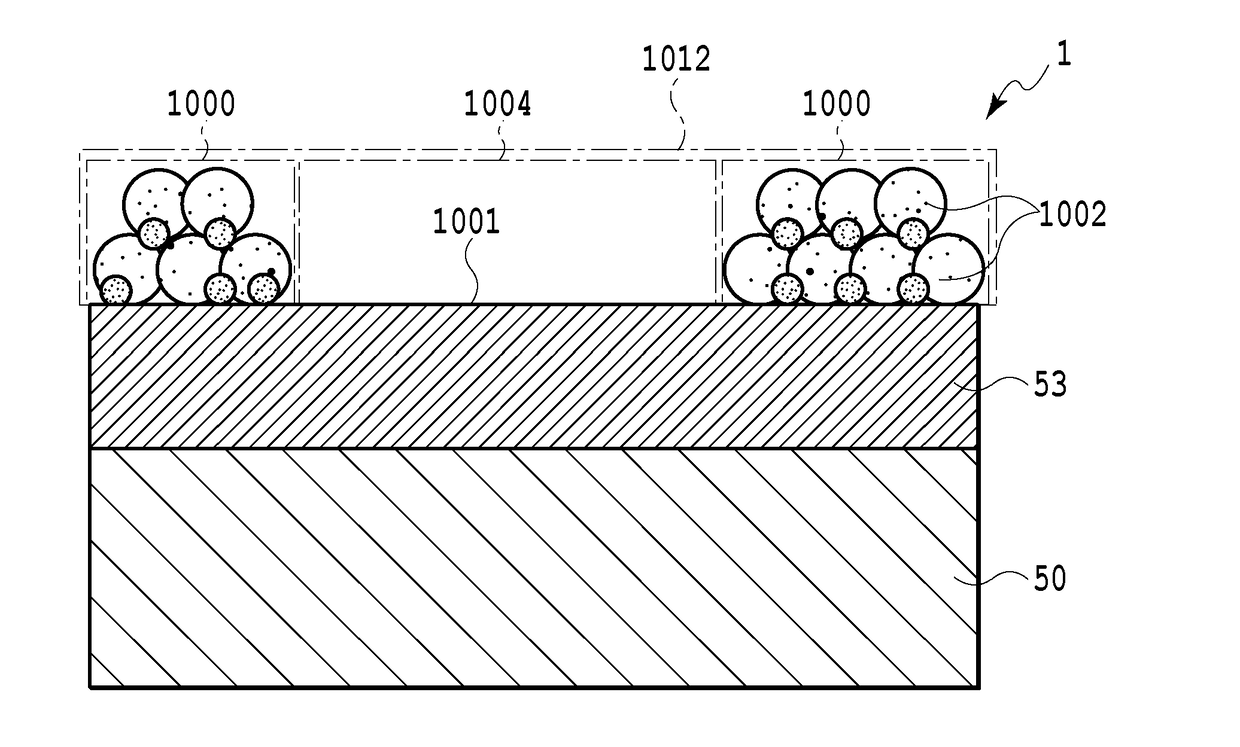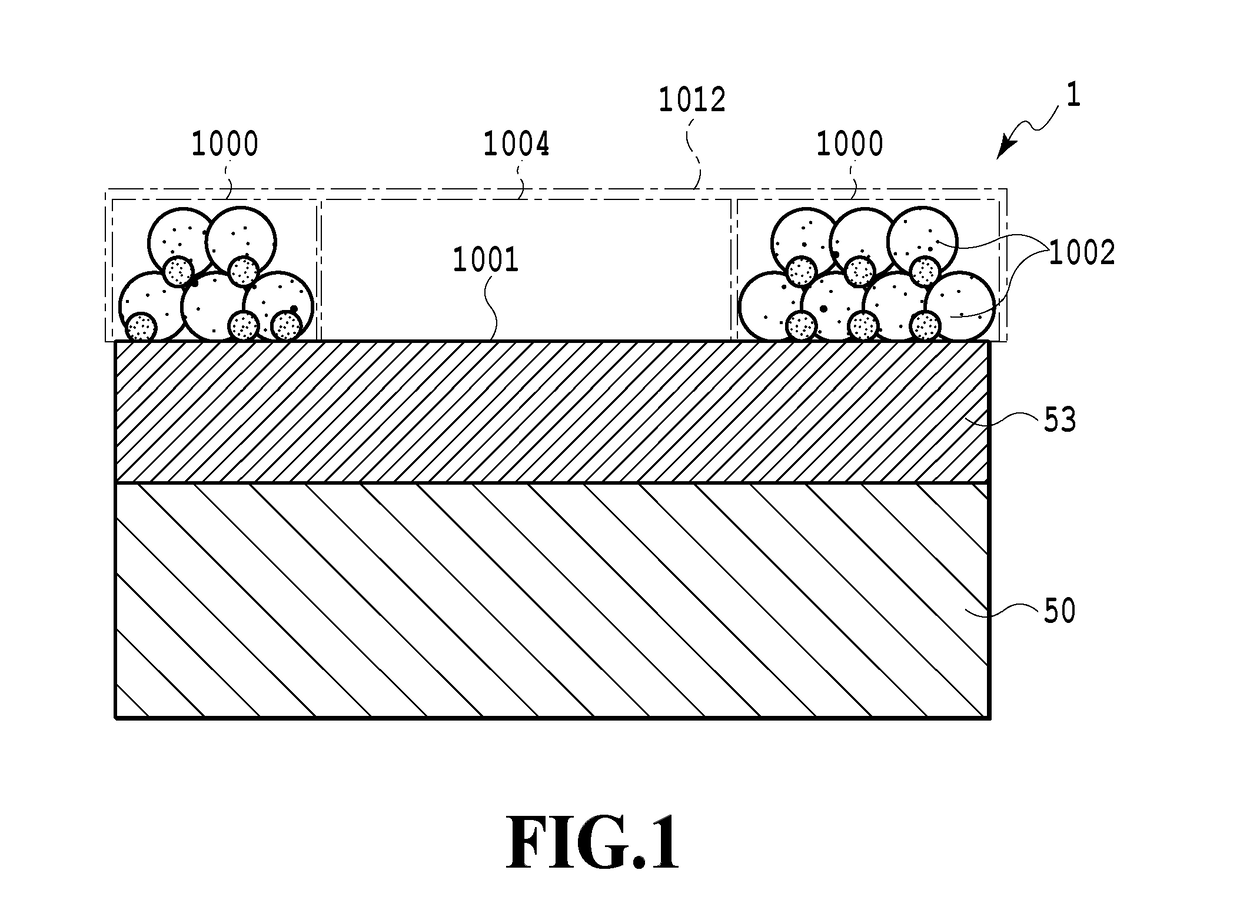Transfer material, printed material, manufacturing apparatus for printed material, and manufacturing method for printed material
a technology of printing apparatus and printing material, which is applied in the direction of duplicating/marking methods, thermography, coatings, etc., can solve the problems of inability to adhere to the ink receiving layer, inability to adhere properly, so as to eliminate the need for primers, print resolution, and the effect of not deteriorating the printing characteristics of image bleeding
- Summary
- Abstract
- Description
- Claims
- Application Information
AI Technical Summary
Benefits of technology
Problems solved by technology
Method used
Image
Examples
example 1
[Preparation of a Hydrated Alumina Dispersion Liquid]
[0326]Into 79.4 pts·wt. pure water, 20 pts·wt. hydrated alumina A (trade name “Disperal HP14” manufactured by SASOL) having a boehmite structure (a pseudo boehmite structure) was added, and 0.4 pts·wt. acetic acid was further added. The mixture was peptized to prepare a 20% hydrated alumina dispersion liquid. Hydrated alumina particulates in the hydrated alumina dispersion liquid had an average particle size of 140 nm.
[Preparation of a Water Solution of Polyvinyl Alcohol]
[0327]Aside from the hydrated alumina dispersion liquid, polyvinyl alcohol (trade name “PVA235” manufactured by KURARAY CO., LTD.) was dissolved into ion exchange water to prepare a water solution of polyvinyl alcohol with a solid content concentration of 8%. The polyvinyl alcohol had a weight-average degree of polymerization of 3,500 and a degree of saponification of 87 to 89 mol %.
[Preparation of a Coating Liquid 1 for Ink Receiving layer Formation]
[0328]To 100 ...
example 2
[0340]A printed material in Example 2 was obtained as is the case with Example 1 except that, instead of the resin-dispersing pigment ink, dye ink (trade name “BC-341XL”; manufactured by Canon Inc.) was used and that a 100% solid image with a print duty of 100% was printed with magenta ink at a resolution of 1,200 dpi and an ink ejection amount of 4 pl.
[0341]In Example 1 and Example 2, the average particle size and the pore size of the inorganic particulates contained in the ink receiving layer are optimal. Thus, in Example 1 using the pigment ink, the pigment color material is prevented from infiltrating into the ink receiving layer, and thus, the area factor is unlikely to be 100%, resulting in slightly inferior image printing characteristics. However, Example 1 poses no practical problem and the transfer material in Example 1 is excellent in image preservation. On the other hand, in Example 2 using the dye ink, the dye ink infiltrates through the ink receiving layer while spreadi...
example 3
[Preparation of Silica Dispersion Liquid]
[0342]Twelve pts·wt. silica particulates (trade name “SNOWTEX MP-4540M”; manufactured by NISSAN CHEMICAL INDUSTRIES LTD.) was added into pure water and the resultant solution was stirred. Thus, a silica dispersion liquid was obtained. The silica particulates in the silica dispersion liquid had an average particle size of 450 nm.
[Preparation of a Coating Liquid 2 for Ink Receiving layer Formation]
[0343]To 100 pts·wt. silica dispersion liquid, 27.8 pts·wt. water solution of polyvinyl alcohol was added, and 1.8 pts·wt. polyallylamine was added as cationic resin. The resultant solution was mixed using a static mixer to prepare a coating liquid 2 for ink receiving layer formation. As the polyallylamine, polyallylamine having a weight-average degree of polymerization of 1600 (trade name “PAA-01” manufactured by Nitto Boseki Co., Ltd.) was used.
[Manufacture of the Transfer Material 2]
[0344]A transfer material 2 was obtained as is the case with Examp...
PUM
| Property | Measurement | Unit |
|---|---|---|
| porosity | aaaaa | aaaaa |
| volume | aaaaa | aaaaa |
| thickness | aaaaa | aaaaa |
Abstract
Description
Claims
Application Information
 Login to View More
Login to View More - R&D
- Intellectual Property
- Life Sciences
- Materials
- Tech Scout
- Unparalleled Data Quality
- Higher Quality Content
- 60% Fewer Hallucinations
Browse by: Latest US Patents, China's latest patents, Technical Efficacy Thesaurus, Application Domain, Technology Topic, Popular Technical Reports.
© 2025 PatSnap. All rights reserved.Legal|Privacy policy|Modern Slavery Act Transparency Statement|Sitemap|About US| Contact US: help@patsnap.com



